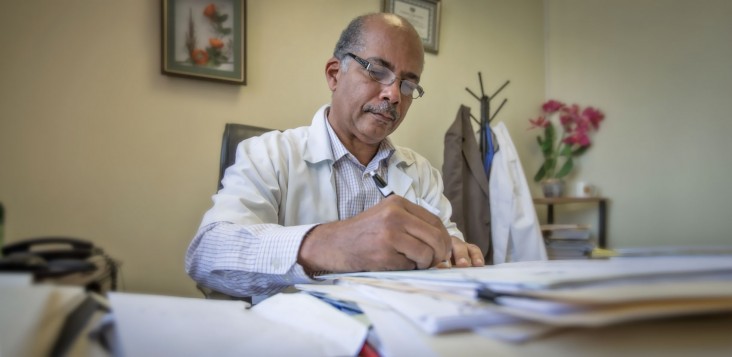Training for Sustainability
Training health-care staff on energy management practices is a vital component of successful health facility electrification efforts. Learn more
You are viewing:
Information released online before January, 2021.
Note: Content in this archive site is NOT UPDATED, and external links may not function. External links to other Internet sites should not be construed as an endorsement of the views contained therein.
You are entering the 2017-2020 Archive for the
United States Agency for International Development web site.
If you are looking for current information, visit www.usaid.gov.

The sustainability of on-site technologies at health facilities requires proper operation, maintenance, and energy management, which can only be achieved with proper institutional support structures, funding, and training.
Without the correct people and support systems in place, no amount of investment in energy systems and technologies will adequately address the health sector’s energy crisis. Even the most expensive or well-designed energy system will break down if it is not properly maintained and monitored. Maintenance requires an educated operator, an understanding of current system performance, and a budget to pay for consumables and replacement parts. With these three pieces in place, an energy system becomes a long-term investment in health-care facility infrastructure that improves health outcomes of patients. If just one of these pieces is missing, the ability of the energy system to support lighting, medical machinery, fresh water supply, and testing is compromised.
Energy systems contain a lot of power that can be dangerous to property and people if improperly handled; making the wrong connections can damage components, start fires, or electrocute someone. Personal and property safety are the most important reasons to provide employee training to health-care staff working on energy systems. Energy system operators must be given basic safety training so that they understand important safety topics such as circuit overloading, improper connections, and grounding and bonding.
Training health-care staff on energy management practices is a vital component of successful health facility electrification efforts. Learn more
Since energy use and management decisions take place at the facility level, the success of the energy system is the responsibility of facility managers. Read the guide
Identifying people and processes for maintaining energy delivery is just as important as the initial system design. Read the report
Comment
Make a general inquiry or suggest an improvement.